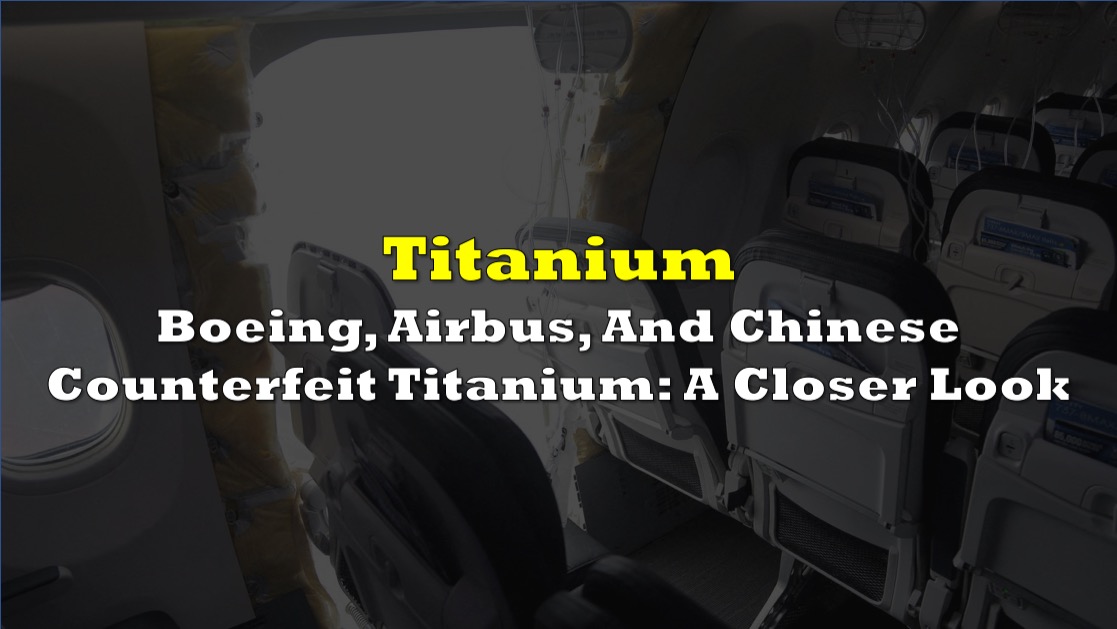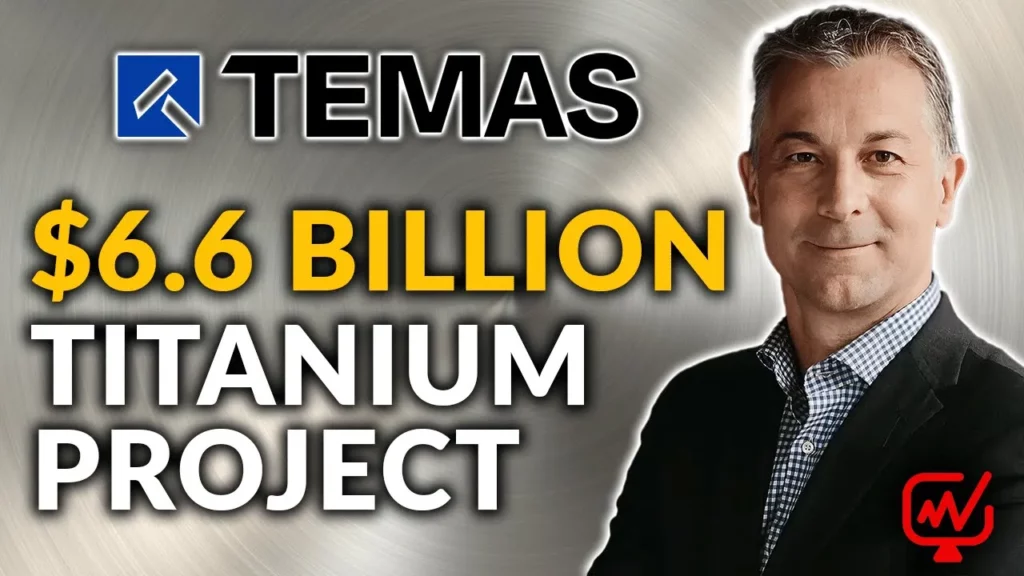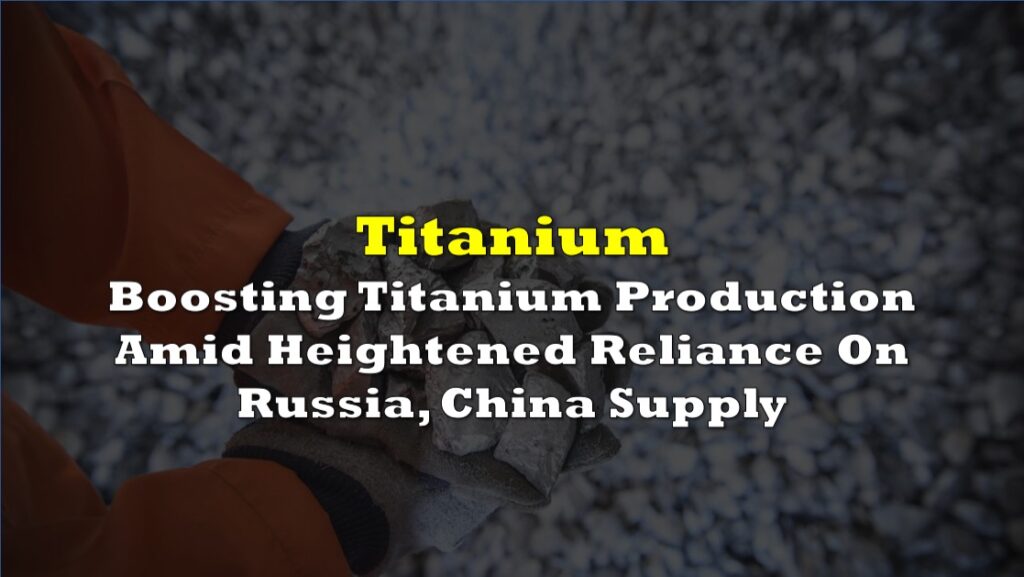FULL DISCLOSURE: This article contains sponsored content.
Recent revelations have emerged regarding the use of counterfeit titanium in the manufacturing of certain Boeing (NYSE: BA) and Airbus jets, raising serious concerns about the structural integrity and safety of these airliners. According to reports from Spirit AeroSystems, a key supplier for both aerospace giants, titanium components sold with falsified documentation have been integrated into several aircraft models, including Boeing’s 737 Max and 787 Dreamliner, as well as Airbus’s A220 jets.
The discovery of the falsified documents, which came to light after parts suppliers identified corrosion and small holes in the titanium material, has prompted investigations by both Spirit AeroSystems and the Federal Aviation Administration (FAA).
“Boeing reported a voluntary disclosure to the FAA regarding procurement of material through a distributor who may have falsified or provided incorrect records,” the FAA said in a statement. “We are investigating the scope of the problem and trying to determine the short- and long-term safety implications.”
The titanium components in question were used in aircraft built between 2019 and 2023. While the exact number of affected planes remains unclear, sources indicate that the parts include critical components such as passenger entry and cargo doors on the 787 Dreamliner, and heat shields on the 737 Max and A220 jets.
“This is about documents that have been falsified, forged, and counterfeited,” said Joe Buccino, a spokesperson for Spirit AeroSystems. “Once we realized the counterfeit titanium made its way into the supply chain, we immediately contained all suspected parts to determine the scope of the issues.”
Both Boeing and Airbus have stated that initial tests of the affected materials have not shown immediate safety risks. Boeing emphasized that it directly purchases most of its titanium and that the majority of its supply is unaffected.
“To ensure compliance, we are removing any affected parts on airplanes prior to delivery. Our analysis shows the in-service fleet can continue to fly safely,” Boeing said.
Airbus echoed similar sentiments, maintaining that “the A220’s airworthiness remains intact.” An Airbus spokeswoman added, “Numerous tests have been performed on parts coming from the same source of supply. The safety and quality of our aircraft are our most important priorities.”
Despite these assurances, the FAA and European Union Aviation Safety Agency (EASA) are conducting thorough investigations. The FAA is also scrutinizing other recent safety issues involving Boeing, including potential falsification of inspection records for the 787 Dreamliner and an incident involving a door panel detachment on a 737 Max 9.
The situation underscores the complexities of the global supply chain in modern aircraft manufacturing. The counterfeit titanium originated from a Chinese supplier and was sold to Turkish Aerospace Industries, which then distributed the material to various manufacturers, including Spirit AeroSystems. An Italian company, Titanium International Group, first detected the issue when it noticed discrepancies in the material’s appearance and documentation.
“The documents in question are known as certificates of conformity,” said Gregg Brown, Spirit’s senior vice president for global quality. “There has been a loss of traceability in that process and a documentation challenge.”
This comes just a month after Boeing has been last hit with another significant safety issue following a tumultuous year of malfunctions and safety concerns. The Federal Aviation Administration (FAA) identified potentially fatal faults that could lead to catastrophic failures mid-air, affecting approximately 300 aircraft operated by United Airlines (NASDAQ: UAL) and American Airlines (NASDAQ: AAL).
Spirit AeroSystems is actively working to trace the origins of the counterfeit titanium and assess its impact. The company is testing parts in stock and on undelivered fuselages to confirm the titanium’s grade and treatment process. Aircraft already in service will be closely monitored, and affected parts will be replaced during routine maintenance if necessary.
“This industrywide issue affects some shipments of titanium received by a limited set of suppliers,” Boeing reiterated. “We are working diligently to ensure all materials used meet the stringent safety and quality standards required.”
Boosting local titanium production
Amid the global supply chain issues, Canada stands out as a significant player in the titanium industry, known for its high standards and reliable production processes. Canada is home to several key titanium producers, with the industry production valued at over $1.4 billion annually, supplying about 15% of the world’s titanium demand.
In light of the interrupted reliance on titanium supplies from Russia following the imposed sanctions and from China amid alleged counterfeit supplies, Western countries, including Canada, are intensifying efforts to enhance local production of critical minerals. Temas Resources (CSE: TMAS) is a notable example, developing the La Blache titanium-iron-vanadium project in eastern Quebec. This project aims to produce high-quality ore suitable for processing into pigment-grade titanium dioxide.
The La Blache Project spans 117 claims, covering 6,203.12 hectares, situated 100 km north of Baie-Comeau, Quebec, with the company recently acquiring further claims as part of an expansion strategy. It is part of the La Blache Anorthosite Complex and hosts the Farrell-Taylor magnetite-ilmenite deposit, encompassing the Hervieux-Est and Hervieux-Ouest mineralization zones.

Temas Resources also holds proprietary processing technology through ORF Technologies Acquisition, enabling the recovery of titanium dioxide (TiO2), vanadium pentoxide (V2O5), and ferric oxide (Fe2O3) from ore. Testing demonstrated full recoverability of TiO2 suitable for further processing.
A recent preliminary economic assessment (PEA) conducted on the property outlined a post-tax net present value of $6.6 billion, with a discount rate of 8%, and a post-tax internal rate of return of 60.8%, based on a mine life of 14 years. The payback period on the project is under two years from the start of production.
The La Blache project is expected to produce a total of 9.2 million tonnes of TiO2, 40.6 million tonnes of Fe2O3, and 152,000 tonnes of V2O5 over its 14-year life of mine.

“We are extremely pleased with the strong economics presented in this PEA on the La Blache Titanium-
Vanadium-Iron Project in Quebec,” said Tim Fernback, President of Temas Resources. “Titanium has been trading well above our assumptions of USD $2,200 per tonne for over three years at over USD $3,000 per tonne since August 2022, and we believe this trend will continue due to the increasing demand for TiO2, major global supply coming to end of life, and lack of both brownfield expansion and new projects coming online in North America.”
Information for this briefing was found via The New York Times and the sources mentioned. Not a recommendation to buy or sell. Always do additional research and consult a professional before purchasing a security. The author holds no licenses.
FULL DISCLOSURE: Temas Resources is a client of Canacom Group, the parent company of The Deep Dive. The author has been compensated to cover Temas Resources on The Deep Dive, with The Deep Dive having full editorial control. Not a recommendation to buy or sell. Always do additional research and consult a professional before purchasing a security.









